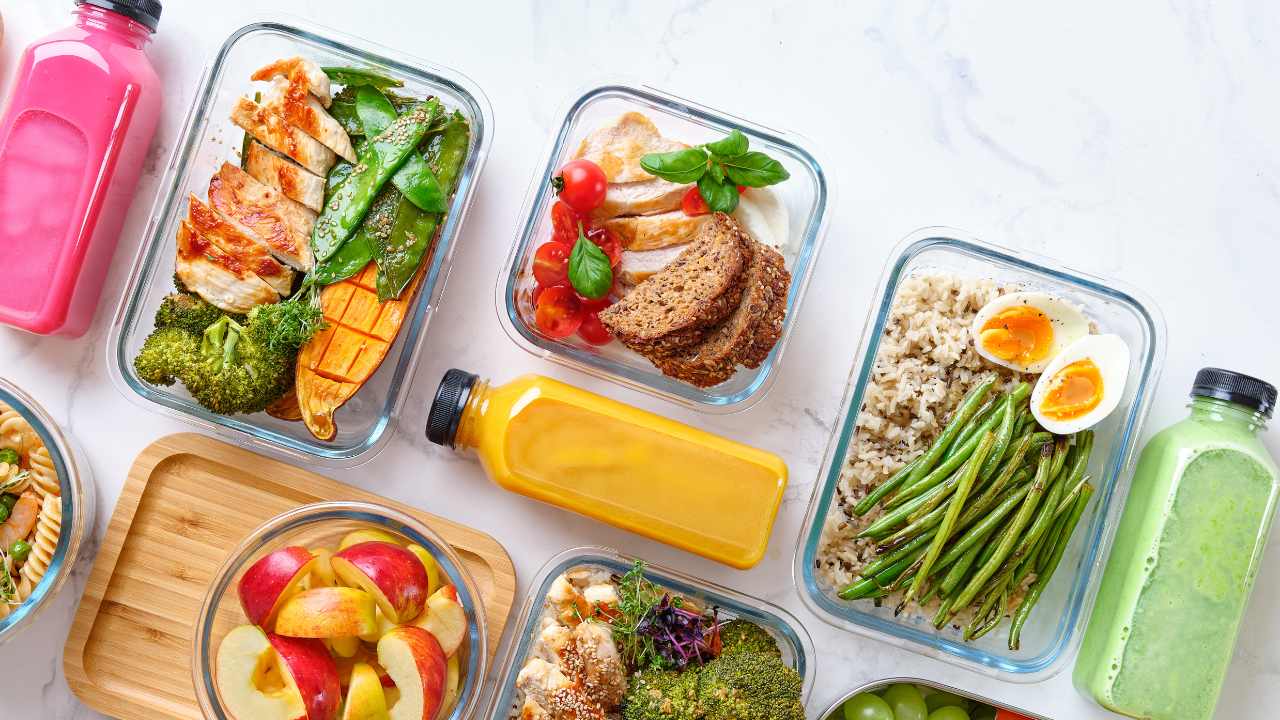In a world where fast food is abundant, time is short, and diet trends are constantly changing, knowing how to eat healthy can feel overwhelming. Yet, it remains one of the most powerful ways to boost energy, prevent disease, and improve quality of life. This guide will walk you through simple, science-backed strategies for adopting a healthy diet that suits your lifestyle, whether you’re a busy parent, a student, or someone simply trying to take better care of your body.
Eating healthy isn’t about perfection. It’s about balance, awareness, and consistency. And the good news? You don’t have to spend a fortune or follow a strict diet plan to get there. This blog will cover everything you need—from the basics of good nutrition to practical meal ideas and common mistakes to avoid.
Why Eating Healthy Matters
Healthy eating is more than just keeping your weight in check. It’s about fueling your body with the nutrients it needs to function at its best. A well-balanced diet:
Also Read
- Health Food: Benefits, Essential Foods, and How to Eat for a Healthier Life
- what foods help gut health?
-
Supports a strong immune system
-
Enhances brain function and mood
-
Reduces the risk of chronic diseases like heart disease, diabetes, and cancer
-
Promotes healthy aging and longevity
-
Improves gut health, skin, and energy levels
According to the World Health Organization (WHO), a healthy diet helps protect against malnutrition in all its forms, as well as noncommunicable diseases (NCDs). In short, what you eat directly affects how you feel—physically, mentally, and emotionally.
Core Principles of Healthy Eating
Let’s break down the essentials of healthy eating:
1. Eat a Variety of Foods
No single food can provide all the nutrients your body needs. Incorporate a wide range of:
-
Fruits and vegetables (aim for color variety)
-
Whole grains (brown rice, oats, quinoa)
-
Lean proteins (chicken, fish, legumes)
-
Healthy fats (avocados, nuts, olive oil)
2. Watch Your Portion Sizes
Use the plate method:
-
½ plate = vegetables
-
¼ plate = protein
-
¼ plate = whole grains
This method, recommended by Harvard School of Public Health, helps you visualize a balanced meal.
3. Limit Ultra-Processed Foods
Try to minimize intake of foods high in sugar, sodium, and unhealthy fats—like soda, chips, and packaged snacks.
4. Drink Plenty of Water
Aim for at least 8 cups a day. Water supports digestion, energy, and metabolism.
5. Listen to Your Body
Eat when you’re hungry and stop when you’re satisfied. Mindful eating helps prevent overeating and builds a healthier relationship with food.
How to Eat Healthy on a Budget
Healthy eating doesn’t have to break the bank. Here’s how to nourish your body without overspending:
1. Plan Your Meals
Before you shop, make a weekly meal plan and grocery list. This reduces impulse buying and food waste.
2. Buy in Bulk
Staples like brown rice, beans, oats, and frozen veggies are cheaper when bought in bulk. They also last longer and provide great nutritional value.
3. Choose Seasonal and Local Produce
Fruits and vegetables are less expensive—and tastier—when they’re in season. Consider visiting a local farmers’ market or buying from community-supported agriculture (CSA).
4. Cook at Home
Home-cooked meals are healthier and more affordable than eating out. Try batch cooking and meal prepping on weekends to save time and money during the week.
5. Reduce Meat Consumption
Plant-based meals using beans, lentils, tofu, or eggs are cheaper and often healthier than meat-heavy dishes.
6. Avoid Pre-Packaged “Health” Foods
Many so-called health snacks or frozen meals are overpriced and not as nutritious as they claim. Always read labels (we’ll cover this shortly).
For more tips on eating healthy on a budget, check out this helpful guide from the U.S. Department of Agriculture (USDA).
Healthy Meal Planning Tips
Meal planning is a game-changer for staying on track. Here’s how to do it effectively:
Step 1: Pick a Planning Day
Set aside 30–60 minutes once a week to plan meals and snacks. Use a printable planner or an app like Mealime or Yummly.
Step 2: Choose Balanced Recipes
Each meal should include:
-
A protein source
-
A whole grain or starchy vegetable
-
At least one non-starchy vegetable
-
A healthy fat
Example: Grilled salmon + quinoa + spinach + olive oil vinaigrette.
Step 3: Prep in Batches
Wash and chop veggies, cook grains, or marinate proteins in advance. Store in labeled containers for grab-and-go meals.
Step 4: Use Leftovers Wisely
Make extra portions and turn them into new meals. Roast chicken from dinner can become lunch wraps or soup the next day.
Step 5: Keep It Simple
Not every meal has to be fancy. A whole grain wrap with hummus, greens, and eggs is healthy, quick, and filling.
How to Read Nutrition Labels
Understanding food labels is essential for making informed choices.
Here’s what to look for:
1. Serving Size
Check how many servings are in the package. If it says 2 servings and you eat the whole thing, double the numbers.
2. Calories
Watch out for hidden calories in processed foods, especially snacks and drinks.
3. Nutrients to Limit
Try to reduce:
-
Saturated fats
-
Added sugars
-
Sodium
4. Nutrients to Get More Of
Look for fiber, protein, calcium, iron, and vitamins A & C.
5. Ingredient List
Shorter lists with recognizable ingredients are generally better. Avoid items with hydrogenated oils, high-fructose corn syrup, or MSG.
Common Myths About Healthy Eating
Misinformation about nutrition is everywhere. Let’s debunk some of the most common myths:
Myth 1: Carbs Are Bad for You
Truth: Not all carbs are created equal. Whole grains, fruits, and vegetables are complex carbs rich in fiber and nutrients. It’s refined carbs (like white bread and sugary snacks) you should limit.
Myth 2: Fat Makes You Fat
Truth: Healthy fats from nuts, seeds, avocados, and olive oil are essential for brain health and hormone balance. The real problem is trans fats and excess saturated fats found in processed foods.
Myth 3: You Must Eat Organic to Be Healthy
Truth: Organic can reduce pesticide exposure, but non-organic fruits and vegetables are still far better than processed junk food. Wash produce well and focus on variety.
Myth 4: Skipping Meals Helps You Lose Weight
Truth: Skipping meals often leads to overeating later and slows metabolism. Balanced, regular meals help maintain steady energy and weight.
Myth 5: You Need Supplements to Be Healthy
Truth: Most nutrients can be obtained through a varied diet. Supplements are helpful in certain cases (like Vitamin D in winter) but not a substitute for real food.
More myths debunked at the Harvard T.H. Chan School of Public Health.
How to Maintain Healthy Habits Long Term
Making healthy eating a lifestyle—not just a phase—requires strategy and self-compassion.
1. Set Realistic Goals
Start small. For example, aim to cook at home 3 nights a week or add one vegetable to every meal.
2. Build Routines
Habits like weekly meal prepping or grocery shopping on the same day each week reduce decision fatigue.
3. Keep Healthy Snacks Around
Stock your fridge and pantry with fruit, yogurt, mixed nuts, or boiled eggs for easy, nourishing choices.
4. Practice Mindful Eating
Eat without screens, chew slowly, and savor your food. This helps you tune into hunger cues and enjoy meals more.
5. Don’t Be Too Hard on Yourself
Slipping up is normal. Focus on progress, not perfection. One unhealthy meal doesn’t erase a week of healthy eating.
6. Stay Informed
Nutrition is always evolving. Follow trusted health organizations like Mayo Clinic or NIH for up-to-date advice.
Conclusion
Healthy eating is a journey—not a destination. It’s about making choices that nourish your body, fit your lifestyle, and bring you joy. You don’t need a rigid diet plan, fancy superfoods, or a personal chef. With simple strategies like balanced meals, smart shopping, and meal planning, you can build a sustainable, delicious, and healthful way of life.
Whether you’re starting from scratch or improving your current habits, this guide provides the foundation. Listen to your body, stay curious, and enjoy the process. Healthy eating isn’t a trend—it’s a lifestyle.
FAQ
Q1: What’s the easiest first step to eating healthy?
Start by adding more vegetables to every meal. It’s simple, inexpensive, and effective.
Q2: Can I still eat out and be healthy?
Yes! Choose grilled over fried, ask for dressings on the side, and watch portion sizes. Many restaurants now offer healthy options.
Q3: Are cheat meals okay?
Absolutely. One indulgence won’t derail your progress. In fact, planned treats can help you stick with healthy habits long term.
Q4: How can I eat healthy if I don’t have time to cook?
Focus on batch cooking, simple meals, and smart shopping. Frozen vegetables and canned beans are nutritious and convenient.
Q5: How do I stop craving junk food?
Cravings usually fade when you’re well-nourished. Eat balanced meals, stay hydrated, and don’t skip meals. Gradually reduce sugar intake and your taste buds will adapt.
Stay Connected With Google News

A passionate food writer with a deep commitment to promoting healthy eating habits, I create engaging and informative content that helps readers make better food choices. With a focus on nutrition, wellness, and practical tips, I share easy-to-follow recipes, health-conscious meal plans, and expert insights to inspire a balanced lifestyle. My mission is to make healthy eating accessible and enjoyable for everyone.





